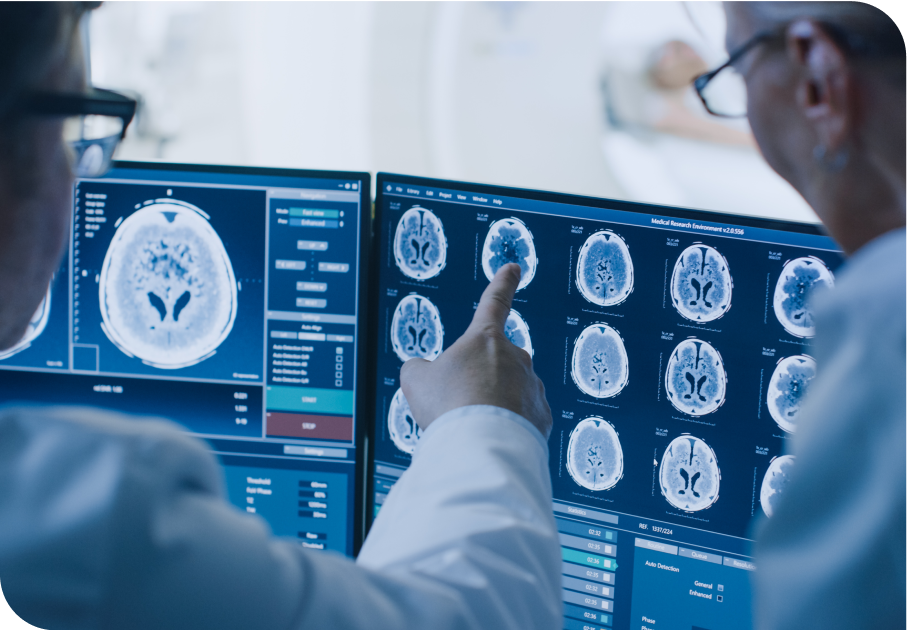
MAGIC-G1 Clinical Trial in 2023
Welcome to the
The MAGIC-G1 clinical trial is now open for enrollment for eligible participants in a research trial to determine if an experimental treatment, MTX110, is safe in patients diagnosed with recurrent glioblastoma (rGBM).
Glioblastoma (GBM) is the most aggressive and most common type of brain cancer. Previously referred to as glioblastoma multiforme, GBM is a malignant (cancerous) grade 4 tumor. Recurrence is very likely to occur and currently there is no standard of care treatment, which is why the majority of patients try to participate in clinical trials. Clinical trials are used to investigate potential new therapies and develop future treatments.




The trial is sponsored by Biodexa Pharmaceuticals.

Purpose of the MAGIC-G1 Trial
The MAGIC-G1 trial is designed to investigate the safety and efficacy (how effective a treatment is) of MTX110.
MTX110 is administered using a technique called convection-enhanced delivery (CED), whereby the MTX110 is infused, or slowly injected, directly into the tumor. This is done via a pump and catheter system that will be implanted at the start of the trial.
The study will have two groups; the first group will have one surgery to implant the catheter. The second group may be offered a second surgery to reposition the catheter depending on the initial response to treatment.

No trial procedures will occur without your consent.
What is involved in taking part in the MAGIC-G1 Clinical Trial?
Before you participate in the trial, you will be required to read a document which explains all the assessments and visits involved in the trial. You will also have to provide written consent to participate.
If you decide to participate, you will undergo a number of assessments to determine if you are eligible. If eligible, you will undergo a surgery where a catheter will be implanted into your brain via a very precise technique called stereotactic surgery. This catheter will be positioned under the skin and will be connected to a pump that the surgeon will place under the skin in your stomach area. The pump is designed to be refilled on a regular basis without it needing to be removed from your body. This allows for MTX110 to be continuously infused into the tumor without interruptions. A specially trained nurse will refill your pump weekly, meaning you will be required to travel to the treating hospital regularly.
As this is a clinical trial, additional assessments will be conducted by your treating physician and they will explain everything to you in detail.
You may be eligible if:
- Your glioblastoma has recurred (size of the recurrent tumor is important for eligibility, please discuss with your doctor)
- You are 18 years old or older
- Able to attend weekly visits at one of the locations (travel/accommodation may be paid)
- Able to undergo CT and MRI scans
- You have not been treated with Carmustine or Gliadel® wafers.
Key inclusion/exclusion criteria
-
What is a Phase I Clinical Trial?
Before introducing new medicines to the public, companies or hospitals must test the experimental treatments very carefully through medical research studies known as clinical trials. This trial is known as a Phase I Clinical Trial, as this is the first time it has been tested in humans with recurrent glioblastoma (rGBM). Although, as of today more than 20 patients with other forms of brain cancer have been safely treated with MTX110. The trial will be used to help determine how safe MTX110 is as a potential treatment for recurrent glioblastoma (rGBM).
-
What is being tested?
MTX110 is a solubilized formulation of a drug called Panobinostat, which is a class of drugs known as a histone deacetylase (HDAC) inhibitor. Panobinostat has previously been approved in a capsule form for the treatment of another cancer – a blood cancer called multiple myeloma. However, scientists have shown that it may also be very effective in treating brain cancers, such as glioblastoma.
It is difficult to treat glioblastoma using oral medications such as the capsule form of Panobinostat, as it cannot access the brain easily. The brain has a natural barrier between blood vessels and brain tissue. This is called the blood brain barrier and it prevents drugs administered orally from entering the brain and reaching the tumor in sufficient amounts, without having significant side effects. MTX110 is a liquid and therefore can be administered in a different way.
MTX110 can be administered via an implantable pump and catheter system using a drug delivery technique known as convection-enhanced delivery (CED). This is where the drug MTX110 will be administered slowly, drop by drop, from a pump directly into the center of the tumor. In the trial you will undergo surgery to place the catheter and pump under your skin. During the trial, every eligible patient will receive MTX110 and the pump and catheter system.
-
How many people will take part in the MAGIC-G1 trial?
The trial is designed to have two groups. Each group will have between 4 and 18 patients. One group will receive MTX110, and a second group will receive MTX110 with an optional second surgery to reposition the catheter depending on how the tumor responds to MTX110 and whether the study doctor agrees a second surgery is suitable. The group a patient enters will depend on the number of patients that have already entered the study.
If you have, or someone you know has recurrent glioblastoma and are interested in taking part in the MAGIC-G1 trial, find out more by clicking “Join the trial”.

